1. Early Life and Background
Kakuryū's journey into the world of sumo began in Mongolia, where he cultivated an early interest in sports and academics before committing to a path that would lead him to the pinnacle of Japanese sumo wrestling.
1.1. Early Life in Mongolia
Mangaljalavyn Anand was born on August 10, 1985, into a prosperous family in Sükhbaatar Province, Mongolia. His father was a university professor. Growing up, Anand enjoyed sports such as tennis and basketball, which were considered high-end activities for common children at the time. He also engaged in wrestling. Influenced by his parents, he excelled in academics, being a diligent student. His family's comfortable circumstances allowed him to watch NHK sumo broadcasts at home, where he was exposed to the burgeoning sumo boom in Mongolia. Inspired by the success of fellow Mongolians like Kyokushūzan and Kyokutenhō, he developed a strong aspiration to become a sumo wrestler.
1.2. Entry into Sumo
At the age of 14, after watching a tournament featuring Mongolian wrestlers, Anand decided to pursue sumo professionally. He initially participated in a selection process for Hanagokoro stable but was not accepted. Undeterred, he learned about the Japan Sumo Promotion Association through a magazine advertisement. He then asked a colleague of his father, who taught Japanese at the university, to translate his letter of intent into Japanese. This letter, expressing his strong desire to join sumo, was sent to the association's chairman, Kazuhiro Tokita. Impressed by the letter, Tokita consulted with Izutsu stable's head, the 15th Izutsu (former sekiwake Sakahoko), and arranged for Anand's entry into Izutsu stable. He arrived in Japan in September 2001 and made his professional debut at the Kyushu Grand Sumo Tournament in November 2001.
Upon joining Izutsu stable, Kakuryū weighed only 143 lb (65 kg). His stablemaster, the 15th Izutsu, initially joked that he was better suited to be a tokoyama (hairdresser) than a wrestler. However, Kakuryū quickly gained weight, reaching 181 lb (82 kg) within three months, which allowed him to pass the new recruit examination. His stablemaster felt compelled to nurture him after seeing his determined smile. Kakuryū was a quick learner, mastering the technique of cutting the mawashi (belt) in a single attempt and becoming fluent in Japanese within a year of his arrival. He also adapted well to Japanese cuisine, including natto, which many foreigners find challenging. His peers noted his high ambition; former makuuchi wrestler Takanoyama, a contemporary, recalled how they would always run at the front during warm-ups at the sumo training school, with Kakuryū saying in broken Japanese, "It's cold, let's run fast and warm up inside." Despite coming from a privileged background, he refuted claims of being "spoiled" or "rich," stating that his family's income was not high and he couldn't afford basketball shoes, and his home in Mongolia was a small 1LDK apartment without a private room. He also endured rigorous training under the then-dominant Asashōryū, patiently accumulating strength. He served as an attendant for Terao during his final active years around 2002, learning a great deal from him.
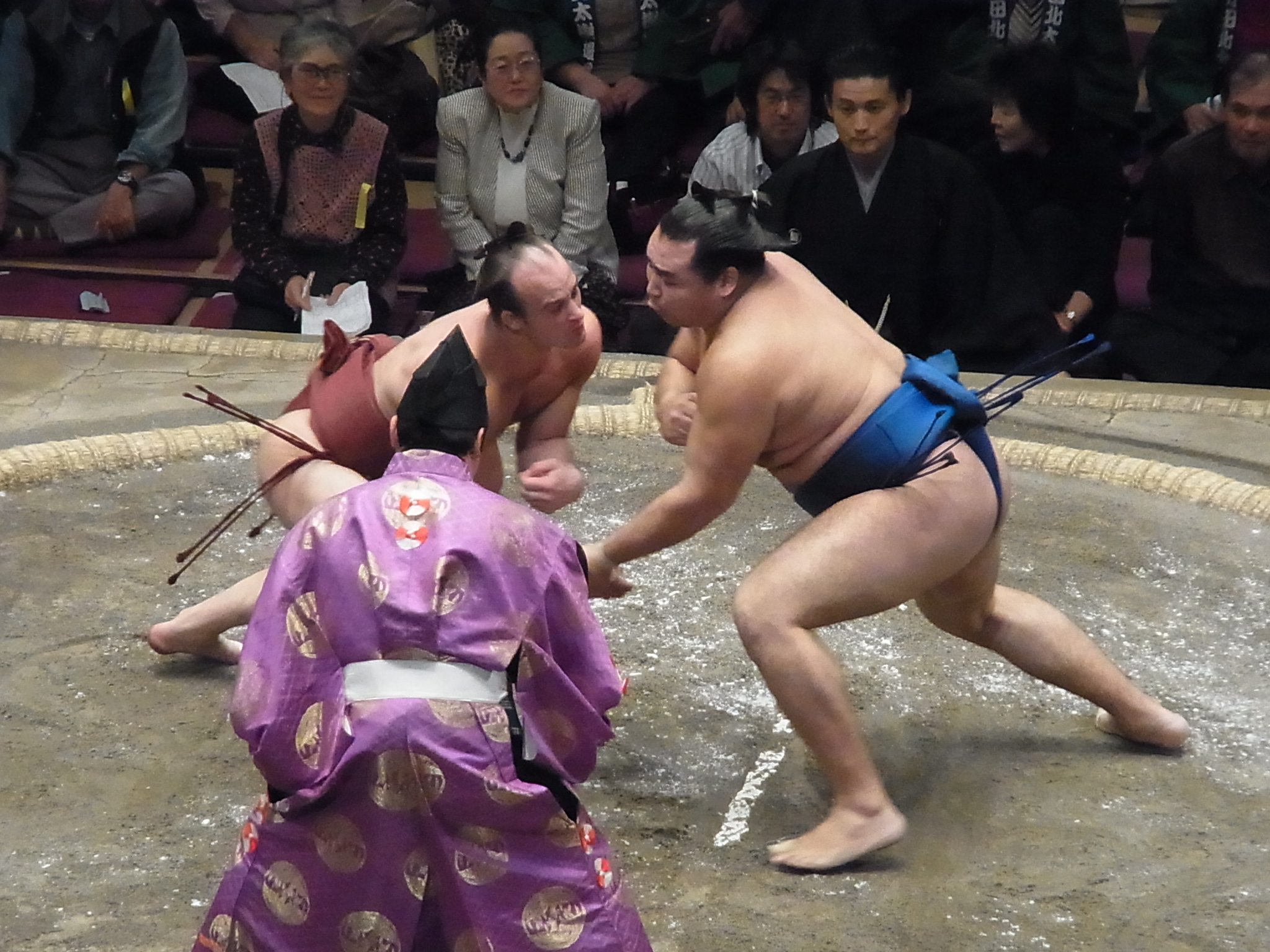
2. Professional Sumo Career
Kakuryū's professional sumo career spanned two decades, marked by a steady ascent through the ranks, culminating in his promotion to yokozuna, a period of dominance, and later, a struggle with injuries that ultimately led to his retirement.
2.1. Debut and Early Divisions
Kakuryū made his professional debut at the November 2001 Kyushu Grand Sumo Tournament. After quickly reaching the fourth-highest sandanme division, he faced difficulties, being demoted back to jonidan twice. He struggled with weight gain due to his dislike of fish during this period. However, after overcoming his aversion to fish, his weight gradually increased, allowing him to achieve winning records in the upper sandanme ranks. After 17 tournaments, he finally won the sandanme championship in July 2004 with a perfect 7-0 record, earning him promotion to the makushita division. Despite a 1-6 record in his first makushita tournament, he diligently continued his training, even practicing shiko (leg stomps) during his one-week break after the tournament, advised by a stable gyōji (referee). He then achieved winning records for six consecutive tournaments from November 2004 to September 2005.
2.2. Rise Through Ranks
Kakuryū first achieved sekitori status in November 2005 upon promotion to the jūryō division. However, his lighter weight proved a disadvantage, and he recorded a 5-10 losing record, dropping back to makushita after just one tournament. He returned to the second division in March 2006, where he secured his first winning record as a sekitori with 9 wins against 6 losses. He continued to achieve winning records, and after scoring 9 wins at the rank of jūryō 1 in the September 2006 tournament, he reached the top makuuchi division that November. He became the eighth Mongolian wrestler to reach makuuchi and the first (and only, to date) from Izutsu stable to make the top division since the current stablemaster took control in 1994. Making his debut at maegashira 8, the highest starting rank since Miyabiyama in March 1999, he achieved a solid 8-7 winning record.
2.3. San'yaku and Ōzeki Career
Kakuryū's ascent continued as he entered the elite san'yaku ranks. After a strong 11-4 record in January 2008, which earned him his first sanshō for Technique, he was promoted to maegashira 1. He was forced to withdraw during the November 2008 tournament after spraining his knee, marking the first time in his career that he had missed any bouts. In March 2009, he achieved a fine 10-5 record from the maegashira 1 ranking, defeating three ōzeki and winning his last eight matches after a 2-5 start, earning his second Technique Prize.
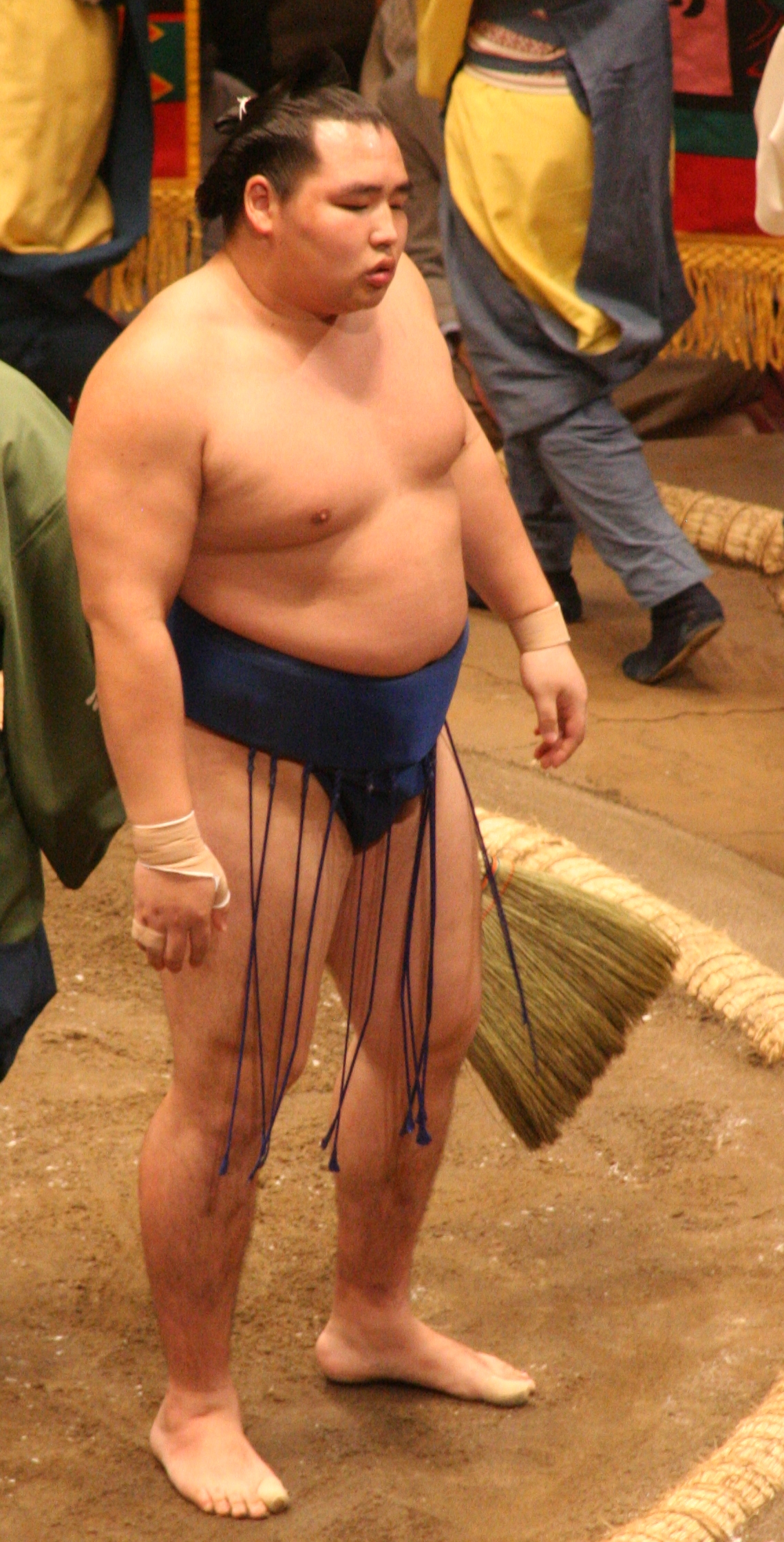
Kakuryū made his san'yaku debut in the following May 2009 tournament at the rank of komusubi. Similar to his previous tournament, he recovered from a 2-5 deficit to win seven of his last eight bouts, earning him another Technique Prize. In July 2009, he was promoted to sekiwake, the first from his stable to do so since Terao in 1989. However, he only managed five wins in his sekiwake debut and fell back to the maegashira ranks. He responded with a strong 11-4 score in September, earning his third Technique prize in four tournaments and fourth overall. He returned to sekiwake for the November tournament, finishing with a 7-8 record that kept him in the san'yaku ranks. Disappointing performances in his next three tournaments saw him slip to maegashira 6, but he responded by winning eleven bouts in July 2010, finishing as joint runner-up and winning his fifth Technique award. He returned to komusubi in September 2010 and moved up to sekiwake in November, finishing 7-8.
In the May 2011 "technical examination" tournament, Kakuryū, ranked at komusubi, finished runner-up for the second time with a 12-3 record, earning his sixth Technique prize. Promoted to sekiwake for the July tournament, he defeated three ōzeki and finished 10-5. In a strong position for possible promotion to ōzeki, Kakuryū started the next September tournament 3-4, and his final record of 9-6 was insufficient for promotion.
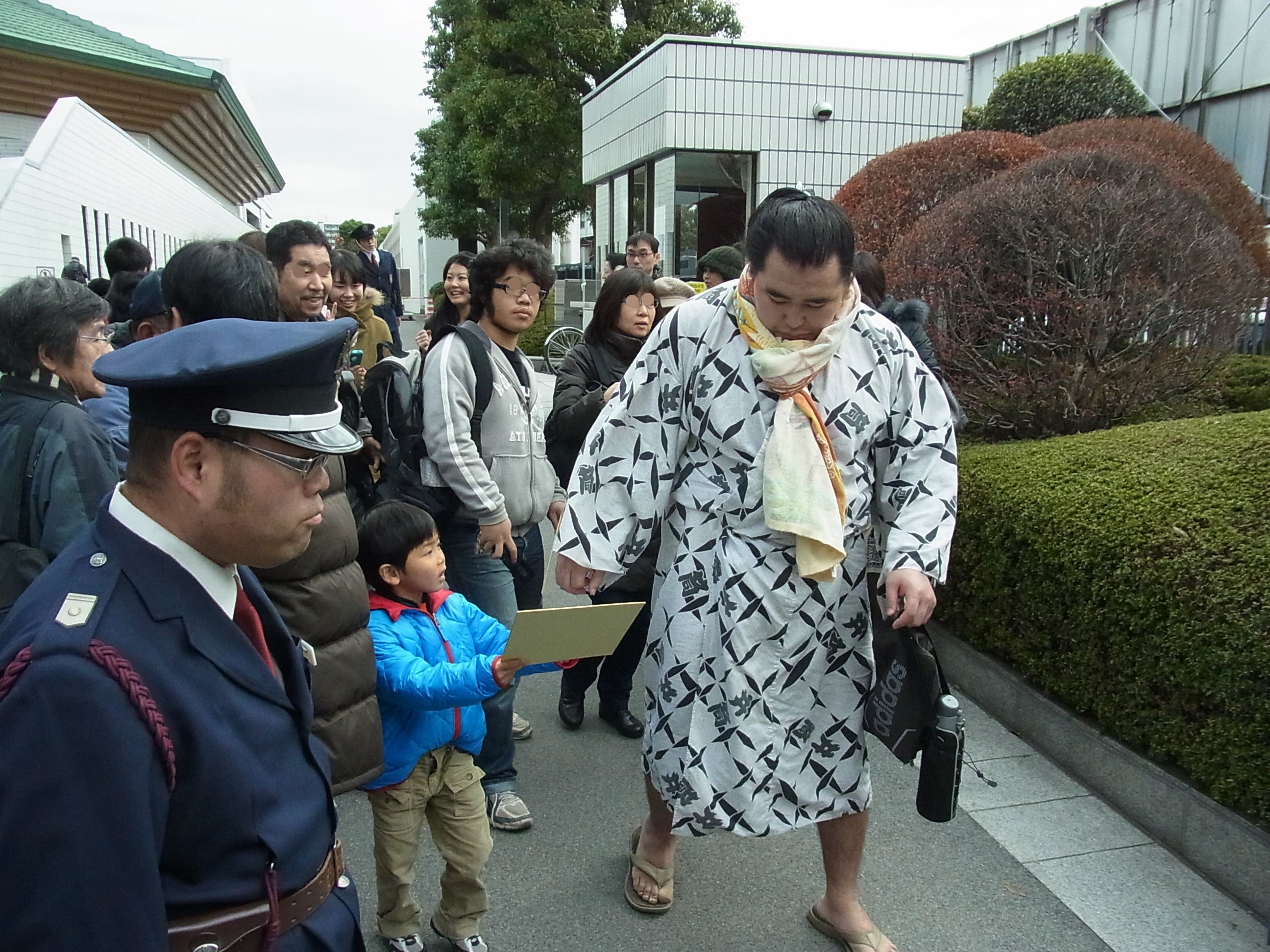
In the January 2012 tournament, Kakuryū defeated yokozuna Hakuhō for the first time, earning his first Outstanding Performance Prize. This was his first victory over a yokozuna in 27 attempts (previously 0-20 against Hakuhō and 0-6 against Asashōryū). In the March 2012 tournament in Osaka, Kakuryū defeated Hakuhō for the second time in a row on Day 9. He entered the final day of the tournament one win ahead of the yokozuna at 13-1, with his only loss being to Kisenosato on Day 8. However, he was defeated by Gōeidō, and Hakuhō's defeat of Baruto led to a playoff between the two Mongolians. Hakuhō gained revenge on Kakuryū to claim his 22nd tournament title. Although he missed out on his first championship, Kakuryū received prizes for Outstanding Performance and Technique. He expressed that inexperience cost him the playoff and that a tournament victory was "too soon for me."
Kakuryū's 33 wins over three tournaments (10-5, 10-5, 13-2) were sufficient for his promotion to ōzeki. The promotion, decided unanimously on March 28, 2012, marked the first time there were six active ōzeki simultaneously in sumo history. His promotion ceremony speech was "I will continue to devote myself to training and strive to perform sumo that pleases the audience." It took him 62 tournaments from his professional debut to reach ōzeki, the tenth slowest in sumo history and the slowest among the nine foreign-born wrestlers who had achieved the rank.
As a new ōzeki, Kakuryū finished the May 2012 tournament with an 8-7 record. In July, despite suffering four consecutive losses, he secured a winning record of 9-6 due to a forfeit win on Day 14. In September, he maintained a 2-loss record until Day 12 but lost to Hakuhō and Harumafuji on Days 13 and 14, dropping out of the championship race. He finished with an 11-4 record, his first double-digit win count as an ōzeki. In 2013, he recorded 8-7 in January, won his first Grand Sumo Tournament title in February by defeating Toyonoshima, and finished March with 8-7. In May, he achieved his first kachi-koshi (winning record) at the halfway point as ōzeki with 8 consecutive wins, ending the tournament 10-5. He followed this with another 10-5 in July, marking his first consecutive double-digit wins as ōzeki. He finished September and November with 9-6 records.
2.4. Yokozuna Promotion and Career
After an unremarkable 2013, Kakuryū surprised many observers with a 14-1 performance in January 2014, defeating Hakuhō in their regulation match and only losing the title in a playoff against him on the final day. It was the fourth runner-up title of his career. The head of the Japan Sumo Association, Kitanoumi, suggested that the March tournament would be his chance for yokozuna promotion.
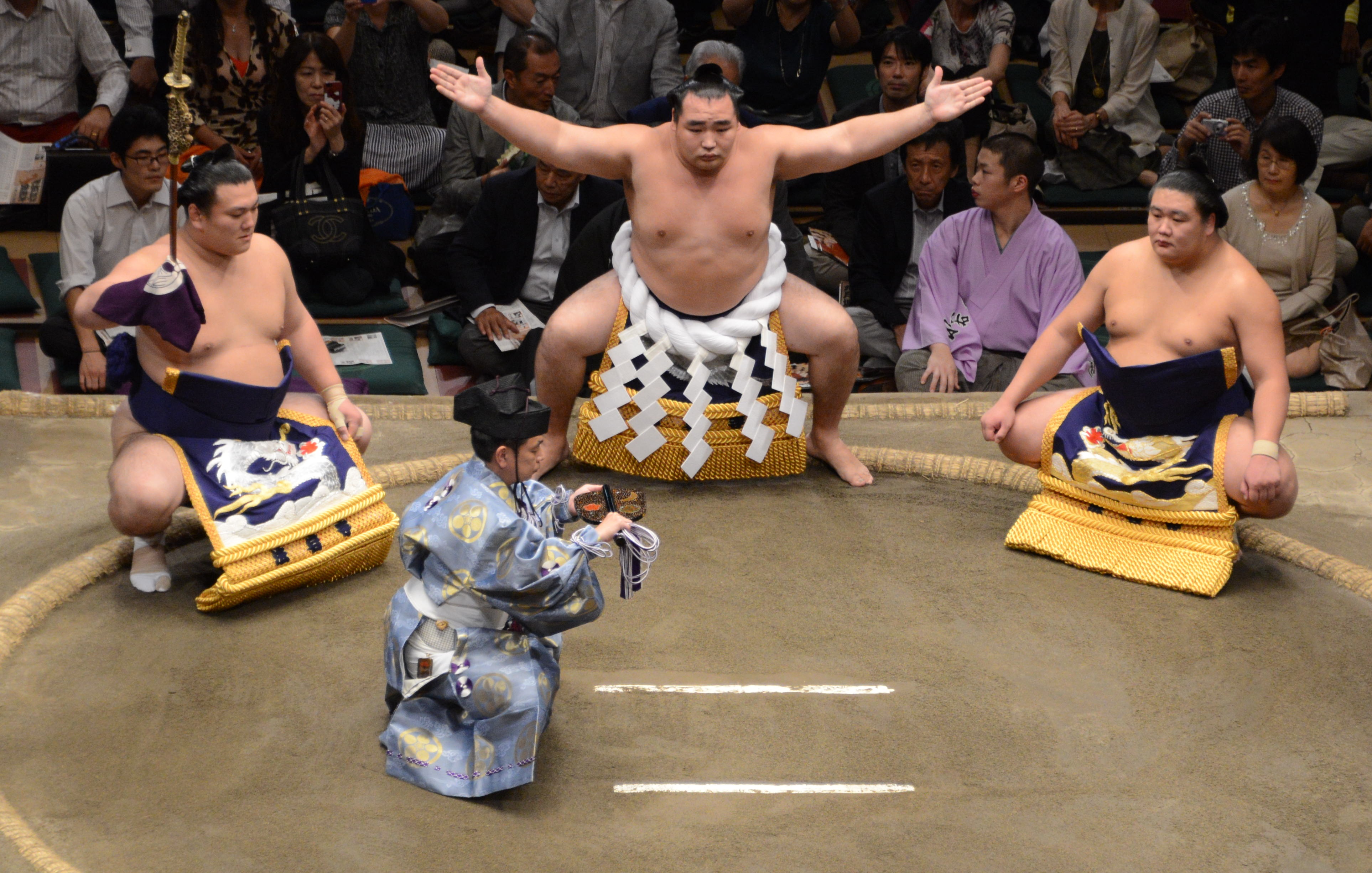
Kakuryū followed this with a 14-1 record in March 2014, defeating both Hakuhō and Harumafuji en route to his first top division yūshō. This victory was also historic as he became the 100th makuuchi champion since the individual championship system was established in 1909. Having satisfied the minimum requirement of two consecutive championships or "the equivalent," the Yokozuna Deliberation Council unanimously recommended his promotion on March 24, which was confirmed by the Japan Sumo Association on March 26. Kakuryū was the first to achieve the rank since Harumafuji in 2012, the fourth Mongolian to do so, the sixth foreign-born yokozuna, and 71st overall. He was also the first yokozuna from the Tokitsukaze Ichimon (stable group) in 52 years and 6 months, and the first to be promoted without two consecutive championships since Ōnokuni 27 years prior. In his promotion speech, he stated, "I humbly accept. From now on, I will devote myself even more to training and strive to perform with all my strength so as not to disgrace the yokozuna name." As a yokozuna, he performed the Unryū-gata style of dohyō-iri (ring-entering ceremony), which was taught by former yokozuna Takanohana. This instruction was historically significant, as it brought the dohyō-iri lineage back to the Tokitsukaze ichimon after a long absence. However, his initial dohyō-iri performances were noted for being somewhat unpolished.
His first tournament as a yokozuna in May 2014 ended in disappointment as he gave up an early kinboshi to Endō on Day 4 and lost his last three matches to finish on 9-6. This tournament also saw a rare incident where Kakuryū won a match by hansoku (foul) due to his opponent grabbing his topknot, marking the first time a yokozuna won by foul. It was also the first time in 19 years that three active yokozuna competed in the same tournament. He fared better in subsequent tournaments in 2014, scoring at least 11 wins in each, and was in contention for the November 2014 tournament championship before losing to Hakuhō in the final bout, his fifth career runner-up performance.
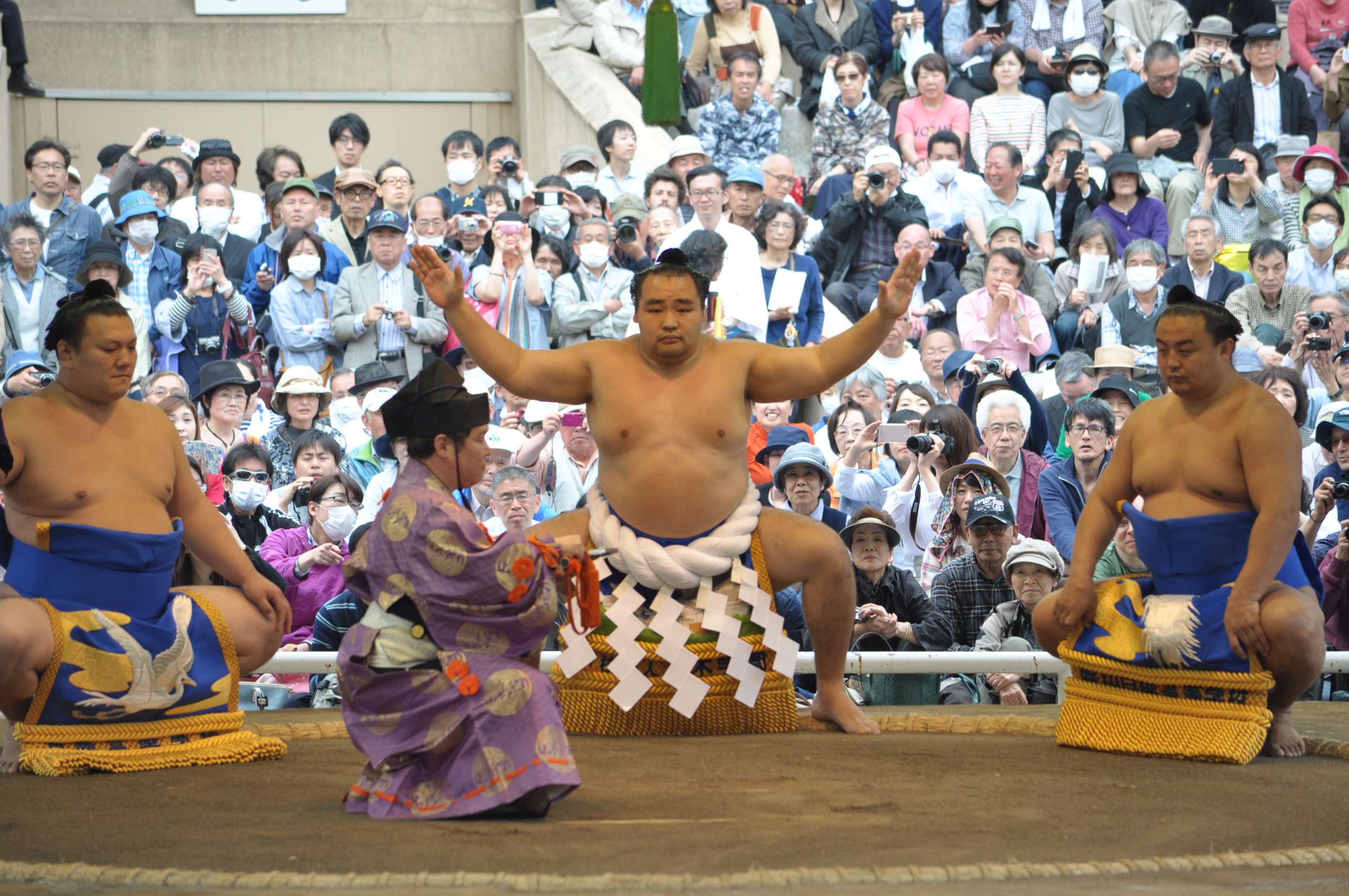
In March 2015, Kakuryū was forced to withdraw on the eve of the tournament due to a torn rotator cuff in his left shoulder. This was his first absence as a yokozuna and came so late that his opening match had to be forfeited, the first time a yokozuna had forfeited an opening match since 1954. His streak of 24 consecutive winning records (the 12th longest in history) also ended. He also sat out the May tournament as the injury had not fully healed, marking the first time a yokozuna had missed two full tournaments in a row since Musashimaru in 2003. He made a respectable comeback in the July tournament, scoring 12-3 and being in contention for the championship until his defeat to Hakuhō on the final day. With Harumafuji absent and Hakuhō pulling out on the third day, Kakuryū was the only yokozuna for most of the September 2015 tournament. He recovered from losses to Yoshikaze on Day 2 and Myōgiryū on Day 10 to enter the final day on 12-2, one win ahead of ōzeki Terunofuji. In the final scheduled match, he was beaten by Terunofuji but won the ensuing playoff by uwatedashinage to take his second championship and his first since his promotion to yokozuna. Despite his success, he received some criticism for using the henka (sidestepping technique) during the tournament, notably against Kisenosato on the penultimate day. In November, he finished with a 9-6 record after beating Hakuhō on the final day.
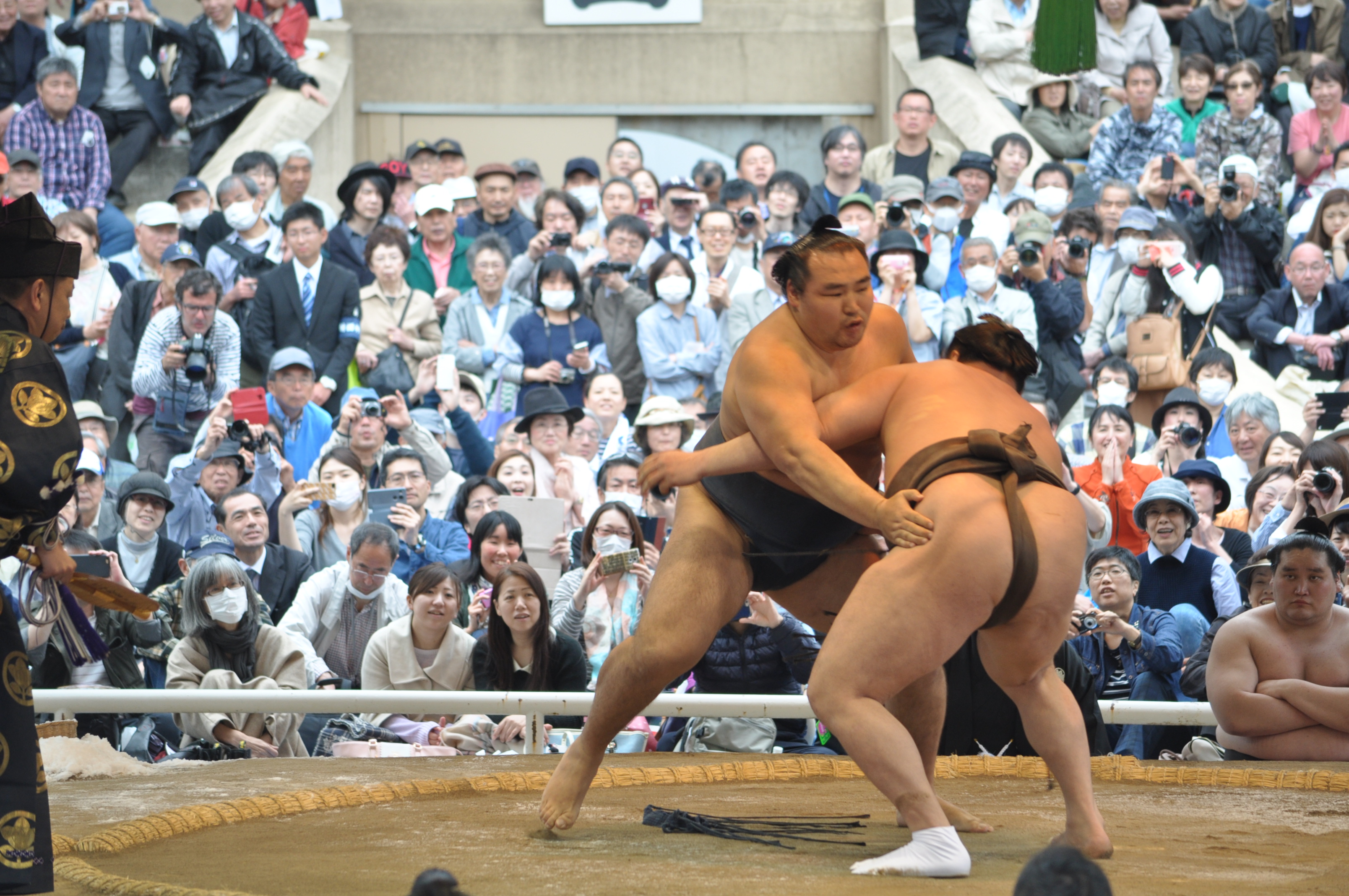
Kakuryū began 2016 with 10-5 records in January and March, and an 11-4 record in May. He withdrew from the July 2016 tournament in Nagoya after suffering injuries to his lower back and left ankle, which were later revealed to be a lumbar disc herniation and bone deformation. He returned in September and recorded ten wins. In the November tournament, he won his first ten matches before losing to Kisenosato on Day 11. He rebounded to beat Kotoshōgiku and Hakuhō before securing his third yūshō with a win over Gōeidō on Day 14, finishing 14-1. This victory was particularly satisfying as he overcame persistent back pain.
2017 began disappointingly as Kakuryū suffered five defeats in the first ten days of the January tournament, including three kinboshi given up to maegashira ranked wrestlers. He withdrew after Day 10 with a neck and shoulder injury. He returned with ten wins in the March tournament in Osaka, though he sustained another kinboshi loss to Shōhōzan. He pulled out of the May 2017 tournament after three losses in the first four days, citing a left ankle injury. He also withdrew from the following July tournament on Day 4, this time with a right foot injury. His stablemaster, Izutsu, stated that Kakuryū would have to retire if he could not win upon his return. He missed the September and November tournaments due to persistent foot and back issues. On December 20, 2017, the Sumo Association announced that Kakuryū's salary would be docked for January 2018 for failing to intervene during the Harumafuji incident involving Takanoiwa.
Kakuryū made his comeback at the January 2018 tournament. After winning his first ten bouts, he then lost four in a row, but won on the last day to finish in third place with an 11-4 record. He was the only yokozuna to complete the tournament after Hakuhō and Kisenosato withdrew with injuries. He underwent surgery in early February to remove loose cartilage from his left ankle. In the March 2018 Tournament, Kakuryū was once again the only yokozuna to compete. He won 11 straight days before suffering defeat against Tochinoshin. He secured his fourth championship on Day 14 against Gōeidō. He finished the tournament with a 13-2 record, despite losing a rematch to Takayasu on Day 15 after a judge's conference. In the May 2018 tournament, Kakuryū won consecutive championships for the first time, losing only to maegashira Shōhōzan and finishing one win ahead of Tochinoshin with a 14-1 record. However, he pulled out of the following July tournament on Day 6 due to a right elbow injury. This marked the first time since March 1999 that all three active yokozuna (Kakuryū, Hakuhō, Kisenosato) withdrew from the same tournament. In September, he appeared to be in excellent form and won his first ten bouts but after losing to Tochinoshin on Day 11, he failed to win again and ended with a 10-5 record. He withdrew from the November 2018 tournament due to a right ankle injury.
In January 2019, Kakuryū withdrew on Day 6 with a 2-3 record due to a right ankle injury, his second consecutive withdrawal. Despite this, he showed good form in pre-tournament training for the March tournament, winning all 21 bouts against maegashira Shōdai and Toyoyama. He finished March with a 10-5 record. In April, he won a tournament during the spring regional tour, receiving 2.00 M JPY and a year's supply of vegetables. In May, he entered as the sole yokozuna. He started strong with 7 consecutive wins but then lost to Tamawashi on Day 8, giving up the first kinboshi of the Reiwa era. He finished 11-4, as runner-up to Asanoyama. In the July tournament, despite a hip injury before the tournament, he displayed strong sumo, achieving a career-best 12 consecutive wins from the start. However, he lost to maegashira Tomokaze on Day 13, giving up a kinboshi and allowing Hakuhō to tie him. On the final day, he defeated Hakuhō to clinch his sixth career top division championship with a 14-1 record.
In the September 2019 tournament, he won his first four matches but then lost three in a row to maegashira Asanoyama, Daieishō, and Tomokaze, marking the 13th time in history a yokozuna gave up three consecutive kinboshi. He withdrew on Day 8 due to a left knee injury. The day after his withdrawal, his stablemaster, Izutsu Oyakata, passed away. Kakuryū then transferred to Michinoku stable on September 27. He withdrew from the November Kyushu tournament on the opening day due to a back injury sustained in training, forfeiting his first match. He pulled out on Day 5 of the January 2020 tournament with a record of one win against three losses, marking his third straight tournament he failed to complete. He later revealed he had been suffering from a high white blood cell count, which doctors said was "hospitalization level."
Kakuryū was designated as yokozuna-ōzeki on the March 2020 banzuke (ranking list) as only one other wrestler remained at the ōzeki rank, a designation not used in 38 years. He was a runner-up for the eighth time in this tournament with a 12-3 record, losing to Hakuhō on the final day.
Kakuryū pulled out of the July 2020 tournament on Day 2 with an elbow injury after injuring himself in his opening match, a defeat to Endō by koshikudake (falling due to loss of balance), the first time a yokozuna had lost by this kimarite since its establishment in 1955. This would ultimately be his last professional bout. He was absent from the following September tournament as well, and his stablemaster stated that the "question of retirement cannot be avoided." He announced that he would miss the November tournament due to his long-standing lower back injury, his sixth withdrawal in his last seven tournaments. Following the November 2020 basho, Kakuryū, along with fellow yokozuna Hakuhō, were issued "warnings" by the Sumo Association's Yokozuna Deliberation Council due to lack of participation in recent sumo tournaments. This was the first time in history that such warnings were issued, signifying a critical point in his career.
Despite having previously been warned, Kakuryū withdrew from the January 2021 tournament due to lower back issues, marking his fourth straight absence. His stablemaster indicated that Kakuryū would put his career on the line at the next tournament. However, he withdrew from the March 2021 tournament due to a muscle strain in his left leg, making it his fifth consecutive absence. Facing potential further condemnation from the Yokozuna Deliberation Council, Kakuryū submitted his resignation to the Japan Sumo Association on March 24, 2021. He retired with six Emperor's Cups and a makuuchi record of 645 wins and 394 losses. He expressed feeling relieved and freed by his decision to retire.
2.5. Major Championships and Awards
Kakuryū's career was decorated with numerous accolades, reflecting his consistent performance at the highest levels of sumo.
- Makuuchi Division Championships (Yūshō): 6
- March 2014, September 2015, November 2016, March 2018, May 2018, July 2019
- Makuuchi Division Runner-up Finishes: 8
- Sanshō (Special Prizes): 9
- Outstanding Performance Prize (Shukunshō): 2 (January 2012, March 2012)
- Technique Prize (Ginōshō): 7 (January 2008, March 2009, May 2009, September 2009, July 2010, May 2011, March 2012)
- Sandanme Division Championship: 1 (July 2004)
- He never received a kinboshi (gold star) during his maegashira career, as he was promoted to san'yaku without defeating a yokozuna from the lower ranks.
2.6. Injuries and Withdrawals
Throughout his career, Kakuryū was significantly affected by a series of injuries, particularly during his tenure as yokozuna, which led to frequent tournament withdrawals.
- November 2008: Sprained knee (first missed bouts).
- March 2015: Torn rotator cuff in left shoulder (first absence as yokozuna, missed two consecutive tournaments).
- July 2016: Lower back (lumbar disc herniation) and left ankle injuries.
- January 2017: Neck (cervical scalene muscle strain) and left shoulder (acromioclavicular joint dislocation).
- May 2017: Left ankle (osteochondritis dissecans).
- July 2017: Right ankle (lateral ligament damage).
- September 2017: Right ankle (osteochondritis dissecans, ligament damage).
- November 2017: Lower back (lumbar contusion) and right ankle (calcaneal avulsion fracture).
- February 2018: Underwent surgery for loose cartilage in his left ankle.
- July 2018: Right elbow (elbow joint inflammation).
- November 2018: Right ankle (tarsal joint injury).
- January 2019: Right ankle (tarsal joint injury, calcaneal bone contusion).
- September 2019: Left knee (medial collateral ligament damage).
- November 2019: Lower back pain.
- January 2020: Left ankle injury and cold, high white blood cell count.
- July 2020: Right elbow ligament damage.
- September 2020: Right elbow injury.
- November 2020: Lower back pain.
- January 2021: Lumbar spondylolisthesis (lower back pain).
- March 2021: Left hamstring partial tear.
These recurring injuries led to a total of 231 absences over 115 tournaments, including 227 days of absence as a yokozuna, which is the second highest in history for the rank. The frequent withdrawals led to warnings from the Yokozuna Deliberation Council.
3. Fighting Style
Kakuryū's fighting style, initially characterized by agility, evolved into a versatile approach that combined traditional yotsu-sumo with effective pushing and pulling techniques.
In 2006, at the beginning of his top division career, Kakuryū was one of the lightest men in the division at around 287 lb (130 kg). He made use of his agility by frequently employing henka (sidestepping) to outwit his opponents. He steadily gained weight, however, and at the time of his yokozuna promotion, he was around 340 lb (154 kg). He preferred yotsu-sumo, a style which involves grabbing the opponent's mawashi (belt) and forcing or throwing him to the edge of the ring. His favored grip was migi-yotsu, with his left hand placed outside and right hand inside his opponent's arms. His three most common winning techniques (kimarite) were yori-kiri (force out), oshi-dashi (push out), and hataki-komi (slap down). He was also fond of shitatenage (underarm throw).
He was particularly skilled at morozashi (double inside grip) and shitatenage, techniques that were passed down from his grand-master Tsurugamine to his stablemaster, the 15th Izutsu, and then to him. He also developed his tsuppari (thrusting) technique by observing and learning from his senior stablemate, Terao. When in good condition as a yokozuna, his initial charge in matches showed significant power.
However, his tendency to pull (hiki) during bouts was often criticized as uncharacteristic for a yokozuna, sometimes leading to his downfall against wrestlers with strong lower bodies who could resist such pulls. Despite this, his overall agility was highly praised. Former sekiwake Takanowaka noted his exceptional skill in moving circularly around the dohyō (ring), while former makuuchi wrestler Ōtachi observed his surprising underlying strength despite his relatively small build and his aggressive thrusting. Former ōzeki Kotoōshū also commented on his quick footwork. Critics noted that when he was not in peak condition, his sumo became more defensive, and his characteristic thrusting attacks were less evident.
His frequent absences as yokozuna drew strong criticism from commentators like Kitafuji, who remarked on his apparent lack of motivation for training and suggested he might be taking the yokozuna title for granted. However, upon his retirement, former ōzeki Musōyama praised Kakuryū as a skilled and stable wrestler, noting his versatility in using various techniques like morozashi, tsuppari, and hiki inherited from his late stablemaster, and his ability to exert forward pressure.
4. Personal Life
Outside the sumo ring, Kakuryū built a family and made a significant personal decision to embrace Japanese citizenship, reflecting his deep commitment to the sport and his life in Japan.
4.1. Marriage and Family
In January 2015, Kakuryū announced his engagement to Dashnyam Munkhzaya, a fellow Mongolian. Their first child, a daughter, was born in May 2015, followed by a son in May 2017, and a second daughter in April 2020. Their wedding reception was held in October 2017, with fellow yokozuna Hakuhō among the guests. His wedding ring size was notably 31.
4.2. Japanese Citizenship
In December 2020, after a two-and-a-half-year process, Kakuryū obtained Japanese citizenship, a necessary requirement for remaining in the Japan Sumo Association as an elder after retirement. He took the Japanese name Mangarajarabu Ananda. He expressed relief and joy, stating that a major source of worry had been removed, allowing him to concentrate fully on sumo. He cited "repaying the Sumo Association" as a reason for his naturalization. His decision reignited discussions about the requirement for foreign-born sumo wrestlers to acquire Japanese citizenship to become stablemasters. Fellow elder Takasago (former sekiwake Asasekiryū) commented that the naturalization might allow Kakuryū to wrestle more freely without the burden of the citizenship issue.
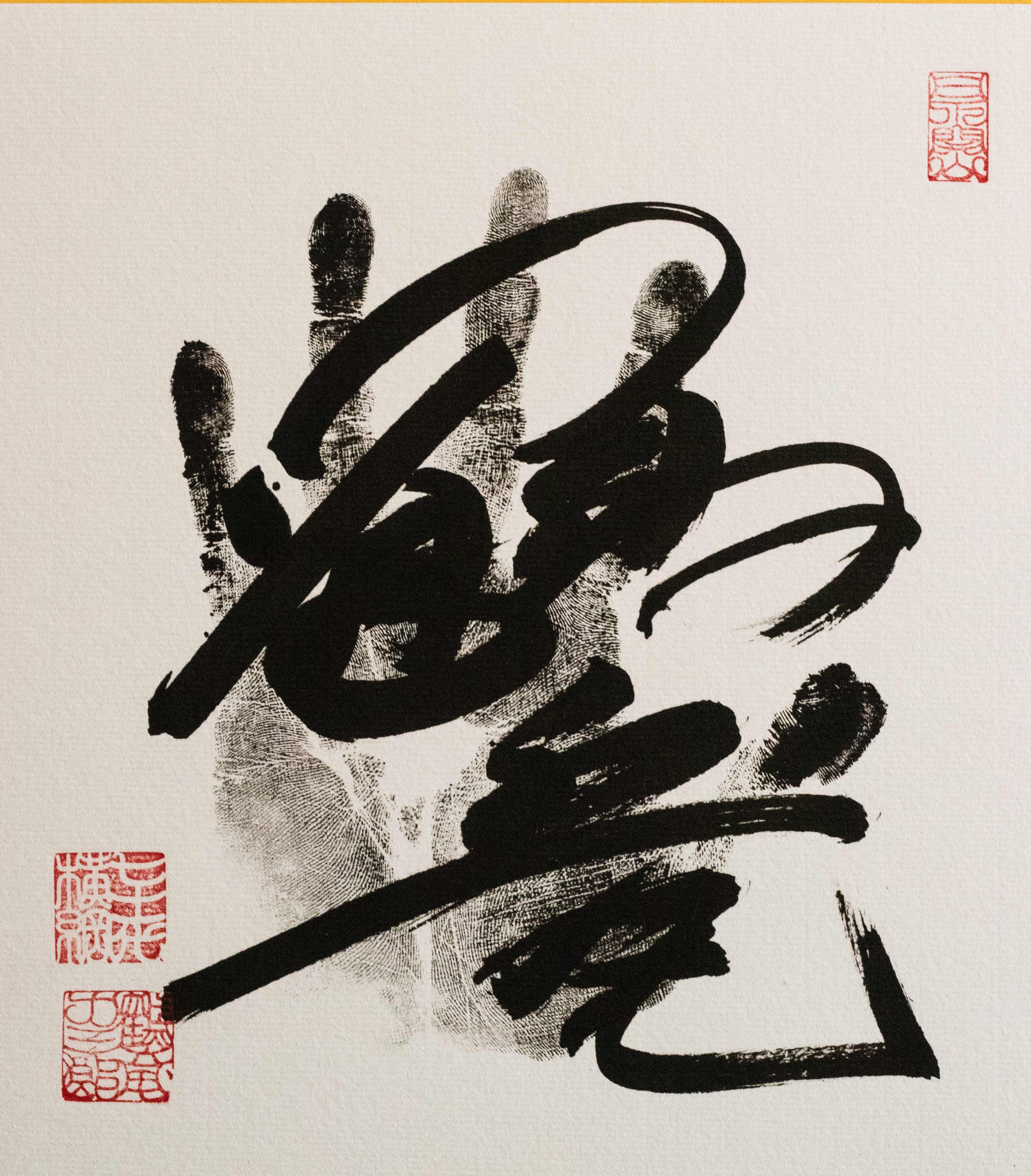
5. Retirement and Post-Retirement
Kakuryū's career concluded with his retirement due to persistent injuries, but his dedication to sumo continued as he transitioned into the role of a stablemaster, establishing his own sumo stable.
5.1. Reasons for Retirement
Kakuryū's retirement was primarily driven by a series of persistent injuries that severely limited his ability to compete. After withdrawing from four straight tournaments due to lower back issues, he initially expressed his intention to compete in March 2021, stating that his career was on the line. However, he withdrew again due to a muscle strain in his left leg, marking his fifth consecutive absence. Facing potential condemnation, including a recommendation for retirement, from the Yokozuna Deliberation Council, Kakuryū submitted his resignation to the Japan Sumo Association on March 24, 2021. He retired with six Emperor's Cups and a makuuchi record of 645 wins and 394 losses. He spoke to reporters of feeling relieved and freed by his decision to retire. Moriya Hidehige, former chairman of the Yokozuna Deliberation Council, had previously stated that Kakuryū's continued absences were "unacceptable" and that he should retire.
5.2. Retirement Ceremony and Elder Status
Kakuryū's danpatsu-shiki (retirement ceremony) was held on June 3, 2023, at the Ryōgoku Kokugikan. Kakuryū performed his final yokozuna dohyō-iri, with former ōzeki Shōdai serving as the tsuyuharai (dew sweeper) and newly-promoted ōzeki Kirishima as the tachimochi (sword bearer). Approximately 380 people took turns in cutting Kakuryū's ōichōmage (topknot), including all three of the other yokozuna from Mongolia: Asashōryū, Harumafuji, and Hakuhō. During the ceremony, he also engaged in a symbolic final bout with his eldest son, allowing his son to push him out of the ring. Asashōryū praised Kakuryū's diligent character and efforts to reach the top.
Upon retirement, Kakuryū retained his shikona (wrestler name) as a sumo elder for a period of five years, a privilege granted to former yokozuna pending his acquisition of a permanent share of elder stock.
5.3. Establishment of Otowayama Stable
On December 27, 2023, the Sumo Association announced that Kakuryū would inherit the Otowayama elder stock, which had been vacated earlier in the year by former maegashira Tenkaihō. Additionally, he was given approval to branch off from Michinoku stable and form his own stable, Otowayama stable, with two wrestlers (Steel and Tokutsuru, who were also formerly from Izutsu stable) and the Sumo Association's most senior tokoyama joining him. The stable is located in a three-story renovated building in Sumida, Tokyo, previously used by the local government. There was also speculation in the media that he might inherit the Tatekawa name, associated with the Shikorayama stable, after the passing of former stablemaster Terao.
5.4. Current Activities
As an elder, Kakuryū, now known as Otowayama Oyakata, is actively involved in coaching and promoting sumo. In March 2024, it was announced that he would take on the role of ringside judge starting with the May tournament. The following month, his stable hosted both Michinoku stable's head coach and top-ranked wrestler (Ōzeki Kirishima) following the closure of Michinoku stable. He also serves as a commentator for sumo broadcasts on NHK and ABEMA, known for his accurate and humorous insights. He has also been seen assisting with arena security and helping at official sumo merchandise stalls, reflecting his hands-on approach as a new stablemaster.
6. Career Records
Kakuryū's professional sumo career spanned 115 tournaments, marked by consistent performance and significant achievements across various divisions.
| Category | Record |
|---|---|
| Total Career Record | 785 wins, 497 losses, 231 absences (115 tournaments) |
| Makuuchi Record | 645 wins, 394 losses, 231 absences (85 tournaments) |
| Yokozuna Record | 266 wins, 117 losses, 227 absences (41 tournaments) |
| Yokozuna-Ōzeki Record | 12 wins, 3 losses (1 tournament) |
| Ōzeki Record | 119 wins, 61 losses (12 tournaments) |
| Sekiwake Record | 71 wins, 49 losses (8 tournaments) |
| Komusubi Record | 45 wins, 30 losses (5 tournaments) |
| Maegashira Record | 144 wins, 137 losses, 4 absences (19 tournaments) |
| Consecutive Makuuchi Winning Records | 24 tournaments (January 2011 - January 2015) |
| Consecutive Makuuchi Double-Digit Wins | 4 tournaments (July 2014 - January 2015) |
| Kinboshi Given (as Yokozuna) | 33 (tied for 8th highest all-time) |
| Yokozuna Absences | 227 days (2nd highest all-time) |
| Makuuchi Championships (Yūshō) | 6 |
| Sandanme Championship | 1 |
| Sanshō (Special Prizes) | 9 (2 Shukunshō, 7 Ginōshō) |
| Kinboshi (as Maegashira) | 0 |
6.1. Makuuchi Consecutive Wins Records
Kakuryū holds several impressive consecutive win streaks in the makuuchi division.
| Rank | Consecutive Wins | Period | Opponent Who Ended Streak | Opponent's Rank |
|---|---|---|---|---|
| 1 | 16 | January 2014 Tournament Day 2 - March 2014 Tournament Day 2 | Okinoumi | East Maegashira 2 |
| 2 | 14 | May 2018 Tournament Day 5 - July 2018 Tournament Day 3 | Ikioi | East Maegashira 2 |
| 3 | 13 | May 2019 Tournament Final Day - July 2019 Tournament Day 12 | Tomokaze | West Maegashira 7 |
| 4 | 12 | January 2018 Tournament Final Day - March 2018 Tournament Day 11 | Tochinoshin | West Sekiwake |
| 5 | 10 | November 2016 Tournament Day 1 - November 2016 Tournament Day 10 | Kisenosato | West Ōzeki |
| January 2018 Tournament Day 1 - January 2018 Tournament Day 10 | Tamawashi | West Sekiwake |
6.2. Makuuchi Head-to-Head Records
Kakuryū faced a wide array of opponents throughout his makuuchi career. Below is a summary of his head-to-head records against notable wrestlers. (Numbers in parentheses indicate forfeit wins or losses.)
| Wrestler | Wins | Losses | Wrestler | Wins | Losses | Wrestler | Wins | Losses | Wrestler | Wins | Losses |
|---|---|---|---|---|---|---|---|---|---|---|---|
| Aoyama | 20 | 1 | Asashōryū | 0 | 7 | Asasekiryū | 5 | 5 | Asanoyama | 2 | 2(1) |
| Anshōfuji | 0 | 1 | Abi | 5 | 1 | Aminishiki | 17 | 15 | Arawashi | 2 | 1 |
| Aran | 12 | 1 | Ikioi | 10 | 4 | Ichinojo | 13 | 3(1) | Iwakiyama | 5(1) | 2 |
| Ushiomaru | 0 | 1 | Endō | 13 | 4 | Enho | 1 | 0 | Kōji | 1 | 0 |
| Ōsunaarashi | 2 | 1 | Okinoumi | 16 | 6(1) | Kaio | 10 | 6 | Kaisei | 15 | 0 |
| Kaiho | 1 | 0 | Gagamaru | 5 | 0 | Kakizoe | 5 | 3 | Kasugao | 1 | 4 |
| Kasuganushiki | 1 | 1 | Katayama | 1 | 0 | Kisenosato | 18 | 32 | Kitataiki | 4 | 0 |
| Kyokutenhō | 15 | 3 | Gōeidō | 28(1) | 14 | Kokkai | 6 | 2 | Kotoōshū | 18 | 12 |
| Kotoshōgiku | 30 | 22(1) | Kotomitsuki | 4 | 10(1) | Kotoyūki | 2 | 1 | Sadanoumi | 2 | 0 |
| Sadafuji | 1 | 0 | Satoyama | 1 | 0 | Shimotori | 1 | 1 | Jūmonji | 1 | 0 |
| Jōkōryū | 1 | 0 | Shōdai | 13 | 0 | Shōtenrō | 1 | 0 | Shōhōzan | 13 | 2 |
| Sōkokurai | 1 | 0 | Daieishō | 5 | 2(1) | Takakeishō | 4 | 1 | Takamisakari | 2 | 5 |
| Takayasu | 13 | 10(1) | Takarafuji | 13 | 1 | Gōfū | 20 | 0 | Tamakasuga | 3 | 1 |
| Tamanoshima | 2 | 3 | Tamawashi | 10 | 6(1) | Chiyootori | 0 | 1 | Chiyotaikai | 3 | 6 |
| Chiyoshōma | 12 | 0 | Chiyonokuni | 0 | 2(1) | Chiyohakuhō | 0 | 2 | Chiyomaru | 1 | 0 |
| Dejima | 4 | 2 | Terunofuji | 7 | 4 | Tokitsuumi | 2 | 1 | Tokitenkū | 9 | 4 |
| Tokushōryū | 0 | 1 | Tokusegawa | 0 | 1 | Tosanoumi | 4 | 0 | Tosayutaka | 3 | 1 |
| Tochiōzan | 24 | 21 | Tochinoshin | 23 | 4 | Tochinonada | 5 | 2 | Tochinohana | 2 | 1 |
| Tochinowaka | 3 | 0 | Tomokaze | 0 | 2 | Toyozakura | 0 | 1 | Toyonoshima | 16 | 9 |
| Toyohibiki | 6 | 2 | Nishikigi | 1 | 1 | Hakuba | 1 | 0 | Hakuhō | 8 | 42 |
| Hakurozan | 1 | 1 | Baruto | 12 | 13 | Harumafuji | 17 | 27 | Bushūyama | 2 | 0 |
| Futen'ō | 4 | 1 | Toyohibiki | 12(1) | 8 | Hokutoriki | 4 | 0 | Hokutofuji | 5 | 4(1) |
| Shōji | 3 | 0 | Mitakeumi | 8 | 6(1) | Miyabiyama | 6 | 2 | Myōgiryū | 11 | 10 |
| Meisei | 1 | 0 | Mōkonami | 1 | 0 | Toyoyama | 3 | 0 | Yoshikaze | 11 | 7(1) |
| Ryūden | 3 | 0 | Roho | 1 | 1 | Wakamino | 1 | 0 | Wakaarashio | 2 | 1 |
| Wakanosato | 6 | 4 | Wakanohō | 0 | 2 |
- Additionally, Kakuryū has a record of 1 win and 2 losses in yūshō playoffs: 1 win against Terunofuji, and 2 losses against Hakuhō.
7. Evaluation and Impact
Kakuryū's career is assessed as one of quiet dedication and technical mastery, leaving a notable impact on the sport of sumo, particularly in the context of foreign-born yokozuna.
7.1. Overall Career Assessment
Kakuryū's career is characterized by his diligent and earnest approach to sumo. Despite not being physically as gifted as some of his peers, he compensated with exceptional skill and versatility. He was known for his polite and reserved personality, rarely showing strong emotions. His attendants often described him as the "kindest yokozuna." He was also noted for his humble habits, such as preferring to walk or cycle between his home, stable, and the Ryōgoku Kokugikan, rather than always using taxis or cars, a common practice for yokozuna.
He was a meticulous student of sumo, often reviewing his matches on video and noting points for improvement in a notebook, setting specific training goals. This dedication allowed him to overcome initial struggles, such as his low weight and dislike of fish, early in his career. His perseverance was evident in his ability to endure rigorous training under senior wrestlers like Asashōryū and Terao.
While his career was marked by his consistent performance and six championships, it was also significantly affected by frequent injuries and withdrawals, which drew criticism from the Yokozuna Deliberation Council and commentators. Despite these challenges, he consistently returned to the dohyō, demonstrating his resilience and commitment to the sport. His final retirement was met with understanding, as he had pushed his body to its limits.
7.2. Impact on Sumo
As the 71st yokozuna and the fourth Mongolian to achieve the rank, Kakuryū contributed to the internationalization of sumo. His quiet demeanor and polite conduct earned him praise, with some calling him "more Japanese than Japanese." His promotion to yokozuna was notably swift and unanimous, with the Yokozuna Deliberation Council praising his sincere character and dignified demeanor.
His willingness to take on the role of rikishi-kai (wrestlers' association) chairman and advocate for the return of children's sumo and baby-holding events during regional tours highlighted his commitment to the future and public engagement of sumo. His transition to stablemaster and the establishment of Otowayama stable further solidify his long-term impact on the sport, as he aims to cultivate future generations of sumo wrestlers.
7.3. Criticism and Controversies
Kakuryū faced criticism primarily for two aspects of his career:
- Frequent Injuries and Withdrawals: His tenure as yokozuna was plagued by numerous injuries, leading to a high number of tournament withdrawals. This drew strong warnings from the Yokozuna Deliberation Council, as yokozuna are expected to maintain a high level of participation. Commentators often expressed concern about his physical condition and perceived lack of intensity in training when injured.
- Use of Henka: While a legitimate technique, his use of henka (sidestepping at the initial charge) in some high-profile matches, particularly against Kisenosato in September 2015, drew criticism for being unbefitting of a yokozuna, who are expected to engage opponents head-on.
- Harumafuji Incident: In December 2017, Kakuryū, along with Hakuhō, had his salary docked for failing to intervene in the assault incident involving Harumafuji and Takanoiwa, drawing a "strong warning" from the Yokozuna Deliberation Council.
8. Related Items
- List of yokozuna
- List of sumo tournament top division champions
- List of sumo tournament top division runners-up
- Glossary of sumo terms
- List of sumo elders
- List of past sumo wrestlers
- List of non-Japanese sumo wrestlers
- Otowayama stable